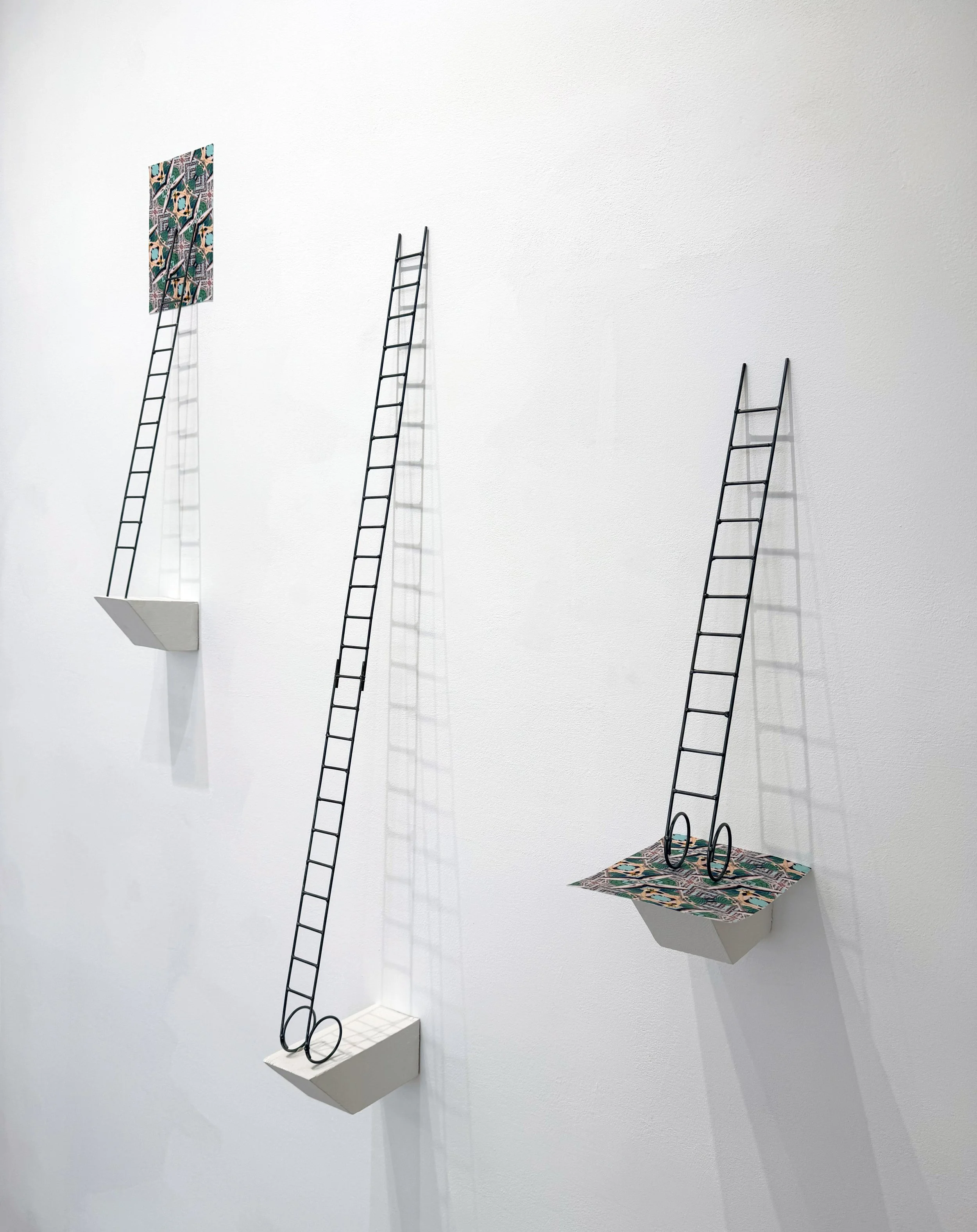Yielding Epicenter
Photo by Felicia Glidden.
The work in this exhibition combines delicate steel forms, inspired by the graceful structures found within airships, with patterns generated by the app, Kaleidomatic, printed on fabric. Amidst these designs are subtle references to the haunting imagery of the twisted girders of the Hindenburg disaster of 1937.
When displaying an extracted essence of these such notable icons as a classic Maybach car, an Airbus plane, ladders used to work on airships, and a Waymo self-driving car, Baker calls to the select few who could identify these solely based on a fragment. The use of this fragmentation further stresses the dichotomy between the handmade and the computer-aided. She connects viewers to the places and people who produce materials that enhance our lives.
Baker pays homage to the spirit of innovation that defined Friedrichshafen’s industrial past while critiquing the American delusionism that led to Zeppelin docking stations mounted atop every hotel looking to gain publicity (even if the idea was incredibly unfeasible) or compete with other buildings striving to be the tallest. She prompts reflection on the implications of emerging technologies, such as self-driving cars and AI, cautioning viewers to consider the delicate balance between progress and recklessness. Baker wants to honor the industrial past while also actively questioning its future. At its core, the goal of this body of work is to evoke a similar feeling one might experience while watching a Ferris wheel being assembled: awe for the engineering feat and scale, and a sense of foreboding about how quickly it came together.




















































